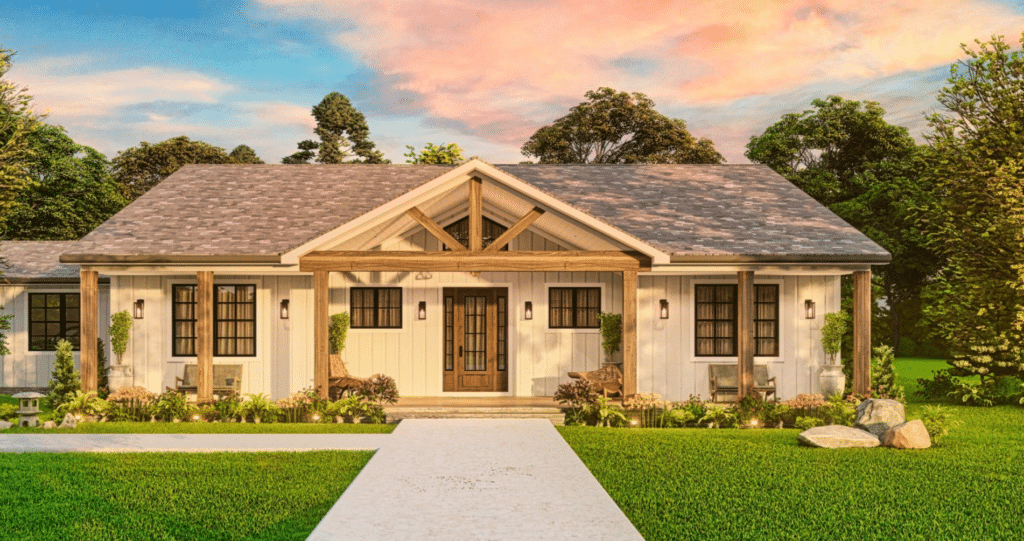Barndominiums Vs. Typical Residences: a Detailed Contrast of Way Of Living and Capability
The choice between barndominiums and typical homes includes various aspects, including way of living preferences and useful requirements. Barndominiums are identified by their open designs and flexibility, commonly appealing to those who focus on communal living and convenience.
Summary of Barndominiums
Barndominiums, a novel housing pattern getting appeal throughout numerous areas, mix the rustic charm of barn-style architecture with the functionality of modern home. These distinct structures usually consist of a metal or wood framework, combining open layout and high ceilings with energy-efficient features. Often situated on expansive country homes, barndominiums use house owners the chance to take pleasure in a peaceful way of life while offering ample space for various tasks.
The adaptability of barndominiums prolongs beyond their aesthetic allure; they can act as both living quarters and practical spaces for hobbies, workshops, or perhaps small companies. Their adaptive design permits for very easy modification, fitting diverse family demands and preferences. Many proprietors value the low upkeep demands associated with steel exterior siding and roofing, adding to lasting longevity.
:max_bytes(150000):strip_icc()/ConvertedBarn-Barndominium-e4e7f75eaca64a9eb5674917da3b20d6.jpg)
Attributes of Traditional Houses
Stressing timeless design and comfort, standard homes are characterized by their unique building designs, which often show historic impacts and local aesthetic appeals. Usual attributes consist of symmetrical facades, gabled roofings, and a focus on workmanship, causing a warm and inviting atmosphere.
Conventional homes commonly include elements such as crown molding, wainscoting, and wood flooring, enhancing their classic appeal. They normally include several spaces with specified functions, promoting household interaction while enabling personal privacy. see website. The format often includes formal living and dining areas, which are conducive to amusing guests and holding household celebrations
Outside products such as brick, wood, or stone are often utilized, adding to sturdiness and a sense of permanence. Barndominium builder. Furthermore, numerous conventional homes are developed with front patios or stoops, cultivating a feeling of area and link with the community
Landscaping plays a significant role in traditional home layout, with properly maintained yards and pathways that enhance aesthetic allure - view now. On the whole, typical homes personify a feeling of nostalgia and stability, appealing to those who value heritage and an extra organized living setting
Expense Comparison
Usually, an expense comparison in between barndominiums and traditional homes reveals substantial distinctions in building costs and overall investment. Barndominiums, often created from steel or steel frameworks, generally incur reduced product and labor costs than traditional homes constructed from timber and brick. The streamlined style of barndominiums can equate to reduced building and construction times, better reducing labor costs and expediting tenancy.
Usually, the cost per square foot for a barndominium varies from $100 to $150, while conventional homes can differ extensively, usually falling in between $150 and $300 per square foot, depending upon area, materials, and layout intricacy. This cost difference makes barndominiums an appealing option for budget-conscious purchasers seeking bigger living areas without sacrificing high quality.
Furthermore, barndominiums might cause long-term financial savings with reduced maintenance prices, energy performance, and insurance coverage prices. Their resilient construction products frequently call for less maintenance in time contrasted to traditional homes. It is necessary to take into consideration that while initial expenses might be reduced for barndominiums, the final investment will likewise depend on specific modification and desired amenities, which can influence the general cost in both real estate kinds.
Lifestyle and Space Considerations
When thinking about way of living and space, barndominiums provide an one-of-a-kind adaptability that attract a variety of house owners. These hybrid frameworks integrate household coping with useful space, frequently featuring open layout that can be adapted to fit private requirements. This versatility is especially helpful for family members or people looking for a tailored living setting, enabling varied usages such as office, workshops, or leisure areas.

Moreover, the visual appeal of barndominiums can deal with both rustic and contemporary preferences, making them a versatile choice for different design choices (Barndominium builder). Inevitably, the option in between a barndominium and a conventional home often pivots on how well each choice aligns with the house owner's lifestyle ambitions and spatial requirements, highlighting the significance of taking into consideration personal top priorities in the decision-making procedure
Environmental Influence and Sustainability
The environmental effect and sustainability of barndominiums existing compelling advantages contrasted to traditional homes. Mainly created from steel and other resilient products, barndominiums are often developed making use of recycled sources, decreasing the need for new materials and decreasing waste. Their design usually highlights open rooms, which can lead to lower power intake for cooling and heating compared to conventional homes with more fractional formats.
In addition, barndominiums can incorporate sustainable features such as solar panels, rainwater harvesting systems, and advanced insulation methods, improving their power performance. The convenience of their design allows property owners to integrate these innovations a lot more flawlessly than in several traditional homes, which may require comprehensive retrofitting.
In addition, barndominiums usually need fewer resources for building and construction due to their less complex, a lot more effective designs (click here to view). Overall, barndominiums stand for a forward-thinking strategy to lasting living, aligning with contemporary ecological concerns.
Final Thought
In recap, the choice in between barndominiums and traditional homes pivots on individual way of life choices and practical needs. Barndominiums, with their open layouts and lasting materials, provide to those looking for versatility and public living.